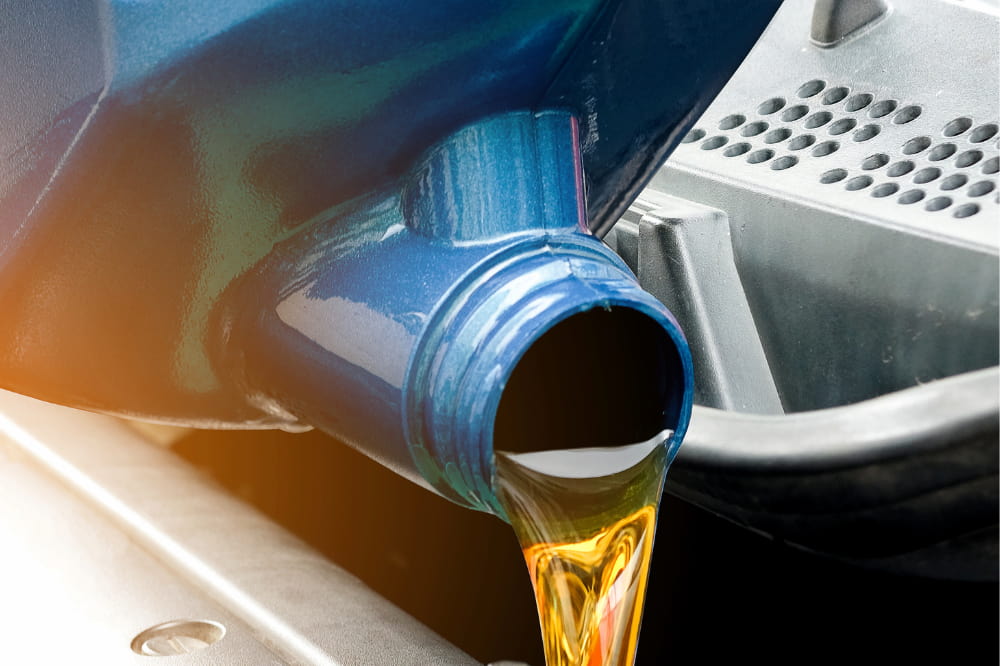How To Check Hydraulic RAM Seals
October 13, 2023

Hydraulic rams, also known as hydraulic cylinders, play a crucial role in various industries and applications. These mechanical devices use pressurised hydraulic fluid to generate linear motion, and they are used in everything from construction equipment to manufacturing machinery.
To ensure the proper functioning and longevity of hydraulic rams, it’s essential to regularly inspect and maintain their components, particularly the hydraulic ram seals.
In this comprehensive guide to hydraulic ram seals, we’ll explore the importance of hydraulic ram seals, the signs of seal failure, and step-by-step instructions on how to check and replace them.
The Importance of Hydraulic Ram Seals
Hydraulic ram seals are vital components within the hydraulic cylinder assembly. Hydraulic ram seals prevent hydraulic fluid from leaking out of the cylinder, ensuring that the system remains pressurised and operational.
Seals help reduce friction between moving parts within the cylinder, improving efficiency and minimising wear and tear. They protect the piston rod from external contaminants such as dirt, dust, and moisture, which can cause damage to the cylinder and reduce its lifespan.
Properly functioning seals maintain the integrity of the hydraulic system, preventing air from entering and compromising system performance.
If these components are not accounted for, then you may need to conduct a full hydraulic RAM repair to make sure that everything is back in working order as soon as possible.
Signs of Hydraulic Ram Seal Failure
Identifying seal failure early is crucial to preventing extensive damage to the hydraulic cylinder and other components. There are several things that you should look out for when searching for signs of failure in the seal.
The most obvious sign is hydraulic fluid leaking from the cylinder. Discovering puddles of fluid around the cylinder or visible wetness on the cylinder body are clear indications of seal issues.
If the hydraulic system is not delivering the expected force or speed, it could be due to fluid loss from seal leaks.
Seal damage can result in increased noise during hydraulic cylinder operation, such as knocking or hissing sounds. This can also cause the cylinder’s efficiency to decrease, causing slower or less precise movements.
If you notice any dust or debris inside the hydraulic cylinder, this is also a sign that the seals may not be effectively keeping contaminants out.
How Should You Check Hydraulic Ram Seals?
Regular inspection and maintenance are essential for ensuring the proper functioning of hydraulic ram seals. These services will mean that you can rely completely on the hydraulic system in the future.
Before starting any inspection or maintenance work, ensure that the hydraulic system is depressurised and completely shut down. This will prevent accidental movement of the hydraulic ram during the inspection.
Begin by visually inspecting the exterior of the hydraulic cylinder. Look for signs of hydraulic fluid leakage, such as wet spots, stains, or puddles around the cylinder. Examine the entire length of the piston rod for any visible damage or scoring.
Use a clean, lint-free cloth to wipe the entire surface of the hydraulic cylinder, especially the piston rod. This will help you identify any potential leaks or contaminants more easily during the inspection.
Cycle the hydraulic cylinder through its full range of motion several times. Pay close attention to any irregularities in movement or sounds, as these can indicate seal problems. Be mindful of any fluid leaks during this process.
Repressurise the hydraulic system and observe any changes. If you notice a pressure drop, it could be a sign of seal failure. Pressure testing should only be done if you have the appropriate equipment and expertise.
Inspect the interior of the hydraulic cylinder for contaminants. If you find dirt, debris, or other foreign particles, it may suggest that the seals are not effectively keeping contaminants out.
Using a calliper or micrometre, measure the diameter of the piston rod. Compare this measurement to the rod’s original diameter, which can be found in the manufacturer’s specifications. If the rod diameter has significantly decreased, it indicates wear on the seals and may require replacement.
If possible, take the hydraulic cylinder apart to access the seals. Carefully examine the condition of the seals and look for signs of damage, wear, or distortion. Pay close attention to any visible cracks, tears, or gaps in the seals.
Inspect the area between the piston and the cylinder’s wall for any signs of seal extrusion. Seal extrusion occurs when the seal material is forced into gaps or crevices due to high pressure. This is a serious issue, as it can lead to seal failure.
Examine the seal grooves in the cylinder housing and on the piston for any signs of damage or wear. Damaged seal grooves can result in improper sealing and may require repair or replacement.
Replacing Hydraulic Ram Seals
If your inspection reveals that the hydraulic ram seals are damaged or worn, it’s essential to replace them promptly to maintain the cylinder’s performance and prevent further damage.
Ensure you have a clean and well-lit workspace to work on the hydraulic cylinder. Gather the necessary tools and replacement seals. You will need to completely depressurise the hydraulic system to ensure safety during disassembly.
Carefully disassemble the hydraulic cylinder according to the manufacturer’s instructions. This typically involves removing the end caps, pistons, and old seals.
Take out the old, damaged seals from their grooves using appropriate tools. Be cautious not to scratch or damage the cylinder walls or piston rod during this process.
Thoroughly clean all components, including the cylinder housing, piston rod, and seal grooves, to remove any traces of old seal material and contaminants.
Carefully install the new hydraulic ram seals into their respective grooves. Be sure to align them correctly and ensure they are properly seated.
Put the hydraulic cylinder back together, following the manufacturer’s guidelines. Lubricate the seals with hydraulic fluid during reassembly to prevent damage during the initial operation.
Pressurise the hydraulic system and test the repaired cylinder to ensure it functions correctly without any leaks or issues.
After seal replacement, monitor the hydraulic cylinder’s performance over time to ensure that the new seals are functioning correctly and that there are no further issues.
If you do come across further problems, our team can deliver an emergency 24-hour service to ensure that your system does not fail.
When to Seek Professional Assistance
While basic inspections and seal replacements can often be performed by individuals with mechanical skills and appropriate tools, there are situations where it’s advisable to seek professional assistance.
Most hydraulic systems are incredibly intricate and sophisticated. Because of this, it’s best to have a professional technician or engineer assess and repair it.
If there are safety risks associated with the hydraulic system, such as high pressure or hazardous materials, it’s crucial to involve experienced professionals.
If you are not confident in your ability to inspect or repair hydraulic cylinders and hoses, it’s safer to consult the experts than to continue on your own.

Jack is the proud new owner of Pirtek Wirral. After taking over the franchise in early 2023, Jack’s leadership has already led to Pirtek Wirral winning national awards. With his expertise in all hydraulic systems, Jack is passionate to grow Pirtek Wirral into a leading franchise.
Have Any Questions?
Get in touch with our team today.
- 0151 725 6777
- help@dynamichydro.co.uk




